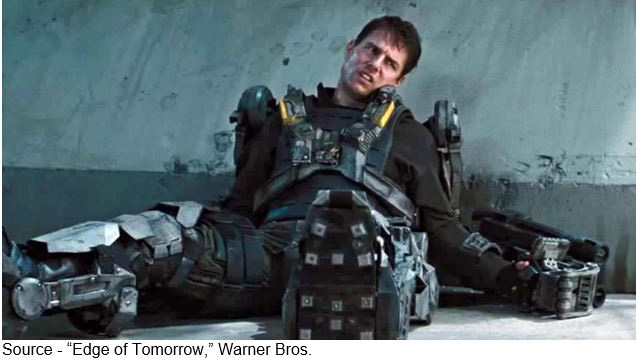
Guest Commentary: Andy Marken
Andy Marken is the President of Marken Communications, a PR firm based in Sunnyvale, CA. OWC is one of Andy’ clients.
– – –
Editor’s comment: While part of what Andy writes is a promotion for OWC storage systems, which are all locally-attached, he also raises interesting points about piracy, security, Cloud-storage, and media distribution. For this reason, I requested Andy’s permission to repost and share this with you.
Larry

“I mean have you tried… you know… tried ALL the options.” –
Lt. Col. Bill Cage, “Edge of Tomorrow,” Warner Bros., 2014
A few weeks ago, we listened to the rosy earnings reports from Microsoft, Alphabet (Google) and Amazon crediting the rapid rise in sales/profits to their cloud services. They didn’t even give lip service to Netflix, Hulu, Vimeo, Amazon Prime, YouTube, Facebook Video, Disney Digital, Alibaba, Tencent, ViU and the thousands of global streaming services feeding the insatiable appetite for video content.
It’s hard to believe that as recently as 2012, over 90 percent of U.S. households subscribed to cable, satellite or another pay TV service.
Today, those gatekeepers are struggling to reinvent themselves as OTT (Over The Top streaming) experts because people cut, shaved or never had the pleasure of a cable bill.
GroupM Research reported that online streaming content is surpassing linear scheduled viewing. Bundled appointment TV has fallen in more than 14 countries as folks take control of their subscription or ad-supported entertainment.
Networks, streaming services and aggregators are dreaming up ways of bulking up their streaming services (subscription or ad-supported) to deliver personalized content, anywhere, anytime, on any screen.
Outlet Options – With the growth of OTT streaming, the number of organizations that need great fresh, original content has exploded for today’s indie filmmakers.
Suddenly, filmmakers don’t just have a few sources that will buy or share the revenue on creative work. Instead, they have thousands of distribution options … some great, some good, some marginal, some flakes.
Studios, networks, stations and advanced streaming services have entered the playing field historically dominated by digital distribution intermediaries. The filmmaker has the content and the evolving delivery options have the infrastructure to reach the eager viewer and things are looking up.
All today’s filmmaker has to do is come up with a cool storyline, creatively shoot/produce it, handle the myriad of post-production details and find a mutually beneficial distribution plan.
Simple!
The process hasn’t changed … just more options. The big change is that smaller, numerous projects will replace the mega gambles of the past.
The challenge is a new, better, faster, easier, cheaper way of production.

Soft, Fluffy – Storing your creative content in the cloud just sounds so right, pure … until you actually drive by one of their storage facilities.
The answer … do it all in the cloud.
The selling proposition is simple; creative people will be free of the drudgery of handling all of the workflow details, so they can focus on doing their films, TV series, video shorts, documentaries, kids’ shows, educational pieces, ads, whatever.
What could go wrong?
Ron Wheeler, Senior Vice President for Content Protection and Technology at Twentieth Century Fox, said, “In some respects, it (piracy) is actually getting worse due to growing usage of illicit streaming devices and pirate services.”
And pirates do it with relative impunity.
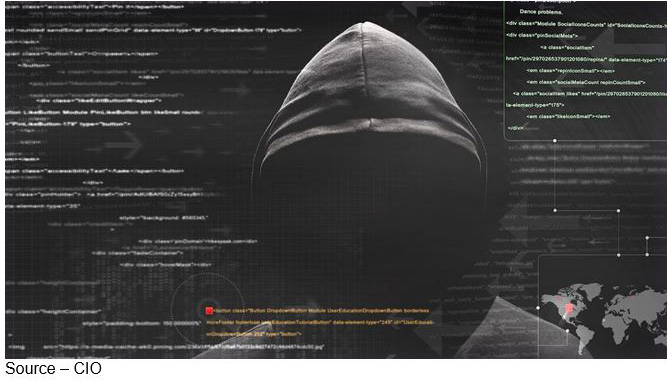
Content Pirates – Being a content pirate sounds romantic but the kid in the hoodie is simply stealing work from a production team that did all the hard work to create something for people to enjoy and hopefully, pay for.
Netflix, probably the gold standard for streaming, streams more than 125 million hours of TV shows and movies … per day.
For the Orange is the New Black premier, they tracked a minimum of 1.5 million illegal downloads; and for House of Cards, at least 1 million. It is estimated that these illegal copies were shared with at least 10 other screens.
Hulu’s highly popular The Handmaiden’s Tale was downloaded more than 1 million times and sent around the globe.
According to the Online TV Piracy Forecasts report, revenues lost to online piracy – TV shows and films – will nearly double to $51.6 billion between 2016 and 2022.
Lisa Holme, Hulu’s head of content acquisitions, spins the problem nicely by saying it is a measure of how passionate viewers are for content. “They are passionate enough about it to break the law,” she said.
The Alliance for Creativity and Entertainment took a different view, saying that piracy is a continuing threat to creators.
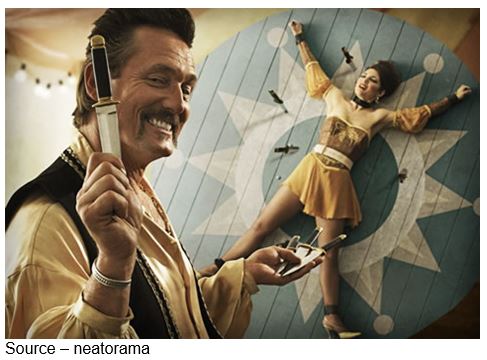
Hit and Miss – Sometimes video pirates aim for a specific film/show to hit and other times they just go for whatever they hit. And it’s a lot easier to hit something good in a big streaming service cloud.
If people who make their living selling video streams are having a tough time keeping content safe and write off the stolen streams as “market research,” how safe will the lone filmmakers’ or production teams’ content be in a cloud that rents out production space?
Right!
At the HPA (Hollywood Professional Association) retreat earlier this year, Greg Barrett, Netflix Manager of Digital Production Assets & Delivery, pointed out that while content is streamed, monitored, and managed globally, content production is the responsibility of indie filmmakers. The projects are produced locally and delivered to one of the streaming firm’s libraries (preferably in 4K).
Long or short; 4K, 8K or VR; documentary or feature filmmakers have all heard the pitch for production storage, transcoding, rendering and visual effects work flows in the cloud.
What’s keeping visual storytelling from using the cloud as its primary workflow source?
Two things – security and connectivity!
Cyber hacks and thefts increased more than 70 percent with the primary focus being on personal and company private data. Even with the promise of encryption and robust 24×7 protection, no cloud service guarantees 100 percent content safety.
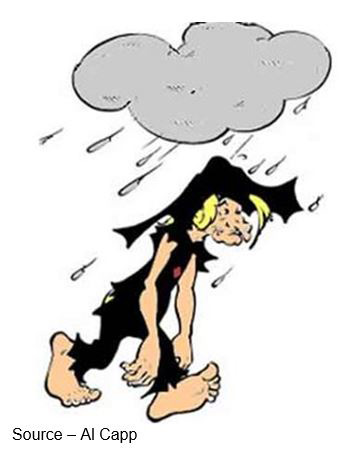
Just His Luck – Cloud storage looks great, but sometimes it leaks.
It’s one thing to use cloud-based products and services but entrusting a complete creative project to the cloud is a major leap in faith. Add to that the importance of having scalable, on-demand connectivity, sustainable bandwidth and low latency.
It’s no wonder filmmakers and production teams rely on local direct and network-attached storage.
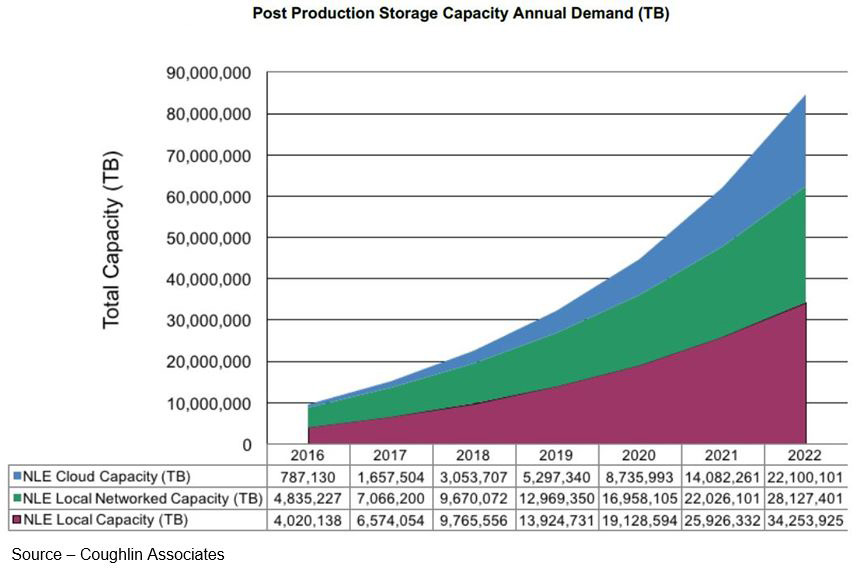
(Click to see a larger image.)
Production Storage – A number of people make a strong case for working in the cloud and storing your work product there; but most filmmakers error on the side of caution when it comes to security and connectivity.
Besides, there’s something reassuring about getting out of bed and patting the storage unit holding your project and knowing there’s a physical copy at your in-laws and second backup across the country … just in case.
OWC Production on the Road
Sometimes, filmmakers just need their project with them, so they can work on it when and where they can.
Chris Sobchack, Wraptastic Productions, is typical of the tens of thousands of indie filmmakers around the globe. He and his wife, Nicole (actress, creator and co-writer), produced an episodic series, Please Tell Me I’m Adopted!. The series is currently available on Amazon Prime and has been well received in the US, UK, Germany, Japan and other countries.
Because Chris is also the Drum and Percussion Technician and touring post production specialist on the Elton John Tour, much of the post production for the first season of the show was done on the road.
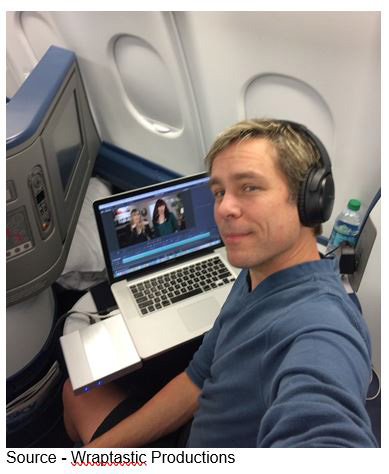
Edit in Flight – When creating an indie film, you often work on the project as you can, squeezing post work in between paying gigs. Chris Sobchack, Wraptastic Productions, takes a little break from editing content from his Mercury Elite Pro Dual mini during his flight to Brazil for the South American leg of the Elton John tour.
“I was editing and grading in hotel rooms, on tour buses and even on the plane,” Chris noted. “Speed and dependability are extremely important, so devices like the compact, portable Mini is vital. It has the performance and flexibility I need because I can use it as RAID 0 or 1 powered by my Mac. You do the work when/where you can, so transferring data at up to 738MB/s helps me stay on schedule.”
He stressed that reliable storage is important in this business saying,“Life is too short for ‘do overs.”
The project took roughly two years to complete with all of the post work (CGI, sound design, foley, dialogue, the score, VFX, color, editing, titles, output and mastering) fit in between his commitment to ensuring audiences enjoyed each Elton John show. In addition to his work with Elton John and Please Tell Me I’m Adopted!, he’s hoping to have funding for Wraptastic’s first feature, a paranormal thriller, Lore Harbour late this summer.
Because of the initial response from Amazon Prime management and the audience, Nicole and he are starting production on the second episodic season of Please Tell Me I’m Adopted!
In the Real Virtual World
One of the newest and maturing entertainment areas is the VR/immersive content arena, where the cinematographer has to allow the viewer to affect the story while still retaining directorial control.
Lewis Smithingham president of VR and partner at 30 Ninjas, was an early adopter of VR film production and is best described as a creative technologist and filmmaker.
He was VR supervisor and editor for Doug Liman’sVR series Invisible. He has shot underwater VR live streams off the Bahamas and livestreamed Conan 360, an original show with Conan O’Brien during ComicCon.
But his Invisible shoot in Haiti almost ended before it began.
Cameras, gear and production tools are large, bulky; and with six to 24 lenses capturing 4K content, the data storage requirements are significant. When they checked in at the airport, they were told they couldn’t take all their stuff with them…something had to be left behind. The crew stuffed spare clothes in an airport locker, put their four OWC ThunderBay 4 RAID systems in their backpacks and continued for the four-day shoot.

“You can buy clothes locally,” Smithingham said, “but with VR, you’re pumping through an insane amount of data. Hoping it’s sitting in a cloud somewhere is a giant leap of faith. It’s physically and fiscally impossible to do a ‘do over,’ even if you’re shooting in your own backyard!”
While the medium can be complex and expensive, he feels understanding the requirements of post-production aids considerably. Which means being confident that every frame captured from every camera is reliably stored and available, so the team has everything they need to deliver a positive, immersive experience.
“Fast, reliable and local storage isn’t just good insurance,” he emphasized. “It can save the project; and perhaps more importantly, your reputation.”
Sometimes it’s Healthy Skepticism
Everyone in the industry likes to be involved in big budget films and TV series–even John Putch (Putchfilms). He has an enviable list of TV series and big-screen movies to his credit and is currently directing the American Housewife TV series and Zack Braff’s new show, Alex Inc.
But every now and then, John likes to get back to what makes film production fun and interesting – micro-budget projects. The Father and The Bear is his most recent of five micro-budget projects that have earned him an impressive number of film festival awards around the globe. The Route 30 Trilogy of films received 47 festival awards and cult Mojave Phone Booth nabbed 15 awards over its 51 official FF selection
He follows his personal indie filmmaker rules — budget under $100,000; maximum crew of eight; equipment must fit in one car and SUV; actors responsible for their own wardrobe/appearance; shot in less than 18 days.
“Big budget projects rely on big names, elaborate special effects and an obscene marketing budget,” Putch explained. “We rely on the tools every Indie filmmaker can use and the creative talents of all of the people involved. It’s all about the story.”
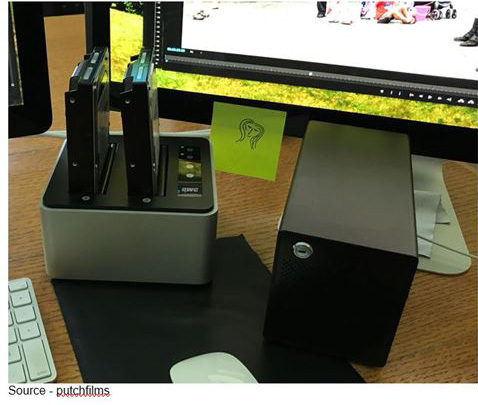
Post Work – Back in his Studio City, CA home/post production facility, John Putch puts the finishing touches on “The Father and The Bear” before placing it with Vimeo On Demand and beginning the promotion of the film.
For production, Putch uses an OWC Drive Doc that he calls a HD toaster dock. The dock enables him to add and remove drives for maintaining multiple drive backups, cloning a hard drive or providing extra storage.
For every film, he uses new hard drives because for him, reusing/overwriting a drive is a false savings and isn’t a risk that even the indie film maverick wants to take.
“I have an offsite backup of every project I’ve done,” he said. “And every 4 or 5 years, I copy the projects to a fresh drive. It’s just cheap insurance every filmmaker should have – studio or indie.”
High-resolution, multi-camera images increase the demand for high-capacity storage and entrusting the content to the cloud is certainly an option. We’d probably be a little more comfortable with it if streaming service guardians weren’t so tired of fighting off the pirates that they decide to relabel the lost income as market research or audience testing.
Reed Hastings, Netflix CEO; and Jeff Bezos, Amazon CEO; would probably prefer to invest that lost income into something like, oh, …new original content.
But they just do their best to protect the content they acquired from indies, fight the good fight and agree with Lt. Col. Bill Cage, “We’ve been through worse.”
It’s a battle today’s filmmaker can’t afford to be in again and again.
